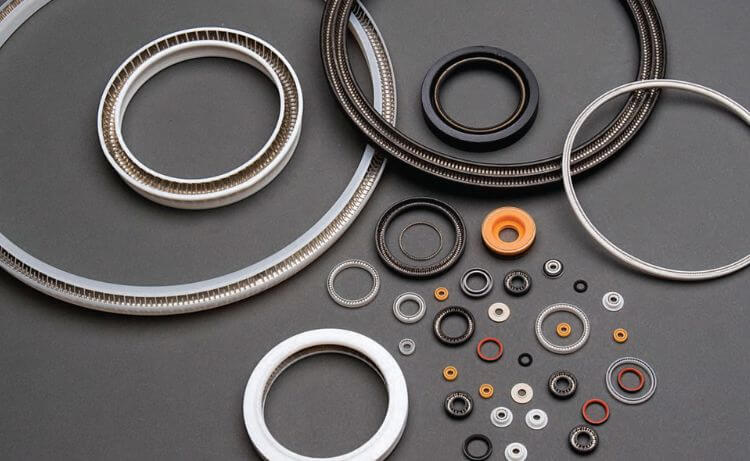
3 Ways Seals Fail
Posted by CDI Products on Nov 15, 2022
Seals play a critical role in equipment performance across many industries. From aircraft landing gear components to wastewater pumps, careful attention must be paid to operating parameters and conditions that may impact seal performance.
Seal failure can be devastating and could cost millions of dollars in downtime. Understanding what causes seals to fail can help you extend seal life and protect your equipment – and bottom line.
Here are three common reasons why seals fail.
1. Improper Installation
If not installed properly, seals can be easily damaged leading to instant failure. There are several items to consider when assessing the installation of seals. Lubrication is usually required to ensure seals do not hang-up and slide evenly along surfaces. Uneven rolling of a seal can result in spiral winding of the seal once installed.
When crossing features such as threads or ports, the use of custom designed installation tools should be considered. These tools will allow the seals to pass these features while remaining protected from damage.
Material contamination from foreign objects or machining burrs can embed into sealing surfaces causing damage that leads to leakage. It is important to ensure all surfaces are clean and burr-free prior to installation.
Seals that must transition from smaller diameters to larger ones require shallow lead-in chamfers to allow seals to properly stretch. Missing or steep chamfers can scrape sealing surfaces. Adding a radius to all lead-in chamfers is another way to ensure smooth, damage-free installation.
2. Seal Glands
Seal failures can be caused by improperly machined seal glands. Special consideration must be taken to ensure that all components of the seal gland and any mating components are designed and manufactured correctly.
Insufficient lead-in chambers will make installation difficult and can cause damage on installation. Adding a radius to transitions also helps minimize any chance of damage. Excessively large corner radii within the gland could lead to over-fill of the seal within the gland, especially at higher temperatures.
Poor concentricity of machining between the seal gland and the piston OD or bore ID can lead to higher squeeze on one side of the seal ring and low squeeze on the other side. This can help amplify compression set on one side of the seal while contributing to leakage on the other. Ensuring glands are machined in the same set-up will make certain your glands are concentric to the rest of the tool.
Excessive extrusion gaps can cause the seal to extrude until failure occurs. This can be minimalized by tightening fits between components and minimizing tolerances. If need be, a back-up ring can be added to help prevent extrusion.
Improper surface finish is also a major consideration. Too fine a polish on the rod or cylinder bore can lead to shortened seal life and lubricants required to control friction can’t be retained on a highly polished (non-porous) metal surface. Too rough of a surface will wear the seal and cause early seal failure.
3. Operating Conditions
Seals are exposed to many challenging operating conditions which can result in catastrophic seal failure if not properly considered. Aggressive chemicals not compatible with the sealing materials can cause swelling or blistering of seals or in extreme cases can dissolve sealing materials completely.
Extreme fluctuations in temperature from the environment, excess friction, and chemical swell can cause compression set of seals, excessive wear, and/or deterioration of the sealing materials.
Over pressurization can cause extrusion and result in mechanical damage to seals. If pressure is removed from seals too rapidly, explosive decompression can damage seals.
All of these conditions can be detrimental to seals if not considered and accounted for in the seal design. It is important to communicate all aspects of the operating environment and test environment to sealing engineers to ensure optimal performance.
Any changes to the application’s working conditions should prompt a careful evaluation of its sealing capabilities. A seal that doesn’t function properly could cause damage and safety hazards. In addition, every minute of downtime results in lost production and maintenance fees.
Questions to Ask When Considering Seal Design and Material Selection
- Installation: Have I considered all surfaces that the seal must cross on installation? Do I have sufficient lead-in chamfers?
- Seal Glands: Did I design my seal glands to the recommendations of the sealing manufacturer including all tolerances, surface finishes, GD&T, diameters, heights, and corner radii?
- Operating Conditions: Have all aspects of the environment been communicated including temperatures, pressures, pressurization/de-pressurization rates, fluid media composition, presence of abrasives, lubrication, motion type, and speed/rate? Are there any differences between the testing environment and the application environment that differ?
Determining Failures Modes
When seals leak, there are usually indicators that point to the root cause. There can be more than one contributing indicator, so it is important to have a qualified seal engineer carefully inspect failed seals.
- Grooving: Axial cuts and grooves on the dynamic lip usually resulting from contamination.
- Swelling: Seal material becomes soft and loses its shape. Usually the result of the seal being exposed to an incompatible media.
- Deterioration: Seal elasticity is lost or cracked and easily crumbles due to incompatible fluid media.
- Hardening: Cracking and a loss of flexibility that occurs as seals harden. This can occur when seals are exposed to low temperatures beyond the limits of the material.
- Scarring: Dents, cuts, or excessive scratches on the lip or dynamic side of the seal resulting from installation damage.
- Wear: Glossy mirror-like shine or egg-shaped wear appears on the dynamic face of the seal lip. This is seen when surface finishes are too fine or sufficient lubrication is not present.
- Extrusion: Corners of the seal protrude into gaps or in the case of elastomer seals, there appears to be nibbling damage on the dynamic sealing surface. This is primarily caused by over-pressurization, lack of a back-up ring, excessing extrusion gaps, or insufficiently hard sealing materials.
- Fracture: Long linear cracks, chunks of the seal missing, or a complete breaking-off of portions of the seal. This is usually the result of insufficiently strong sealing materials seeing excessive stresses due to extreme low temperatures or over pressurization.
Get the Most Out of Your Seals
Regardless of your industry, proper sealing eliminates or reduces Mean Time Between Failure (MTBF) so you can:
- Increase the reliability of the equipment to function in place
- Run the equipment at maximum capacity
- Optimize maintenance schedules
- Reduce wear and enable a longer equipment life cycle
- Better plan for your expenditures
By focusing more on installation, surface finish, and operating conditions, you’ll improve seal performance and enhance equipment performance.
Topic: seals, wastewater, seal glands
